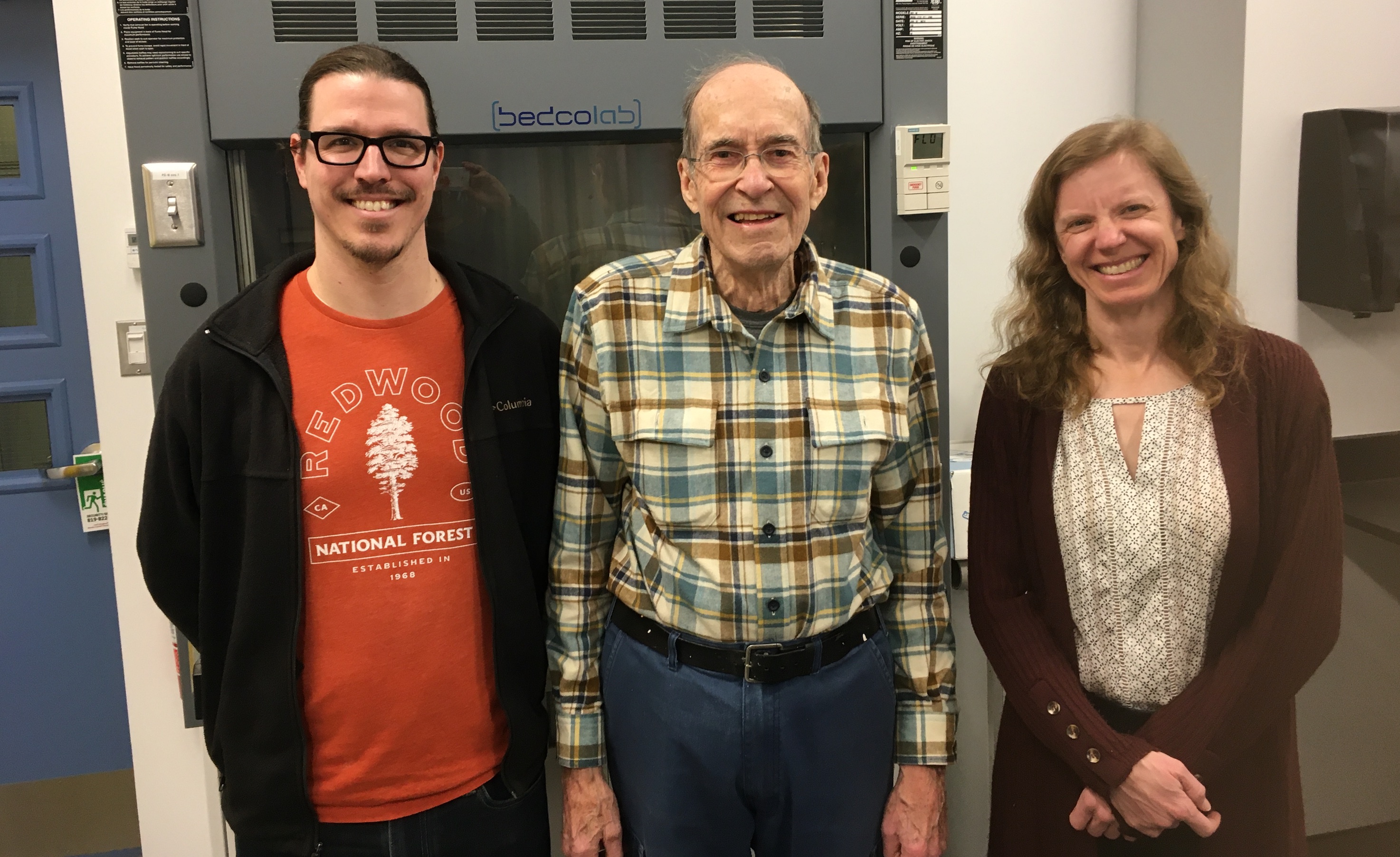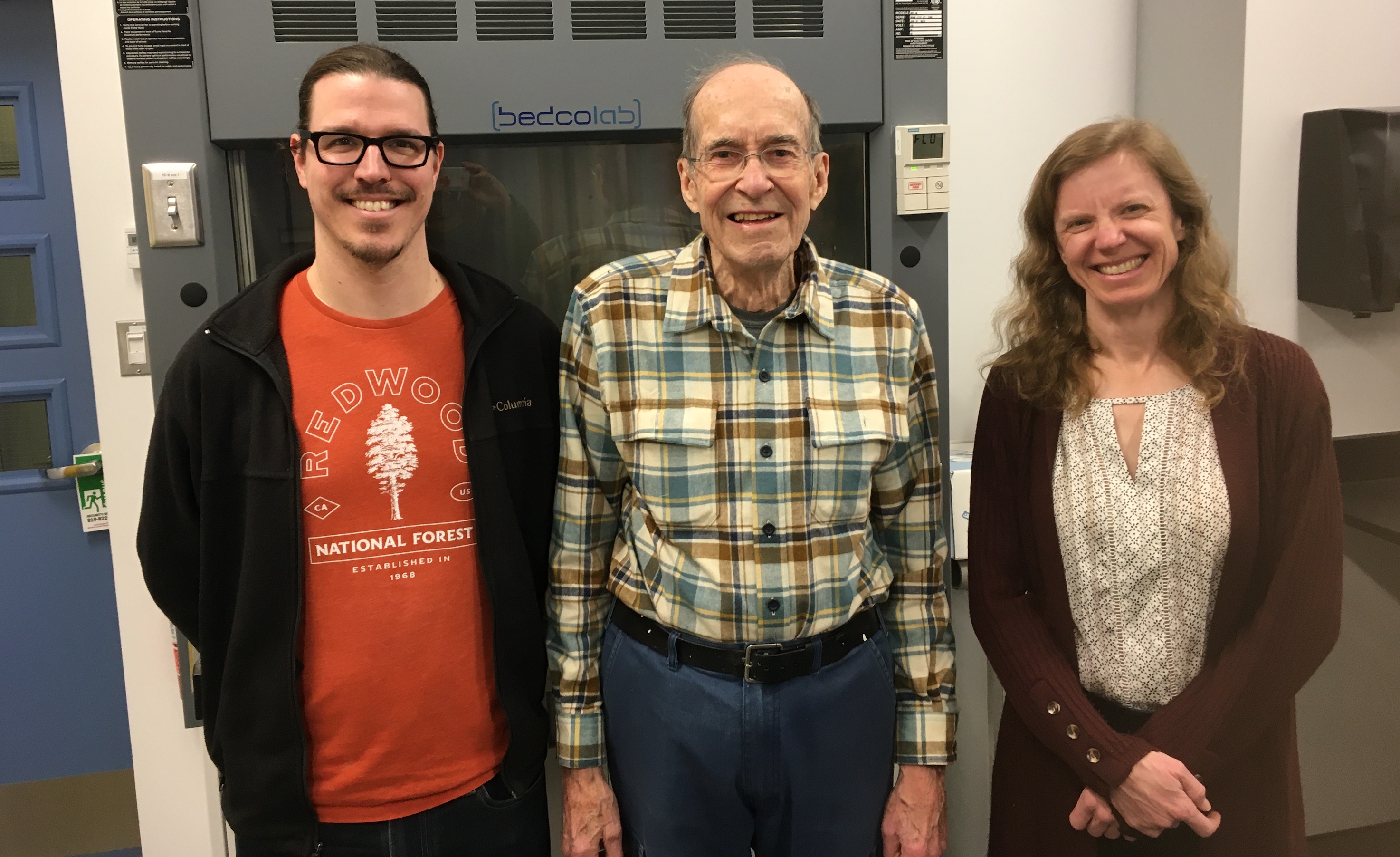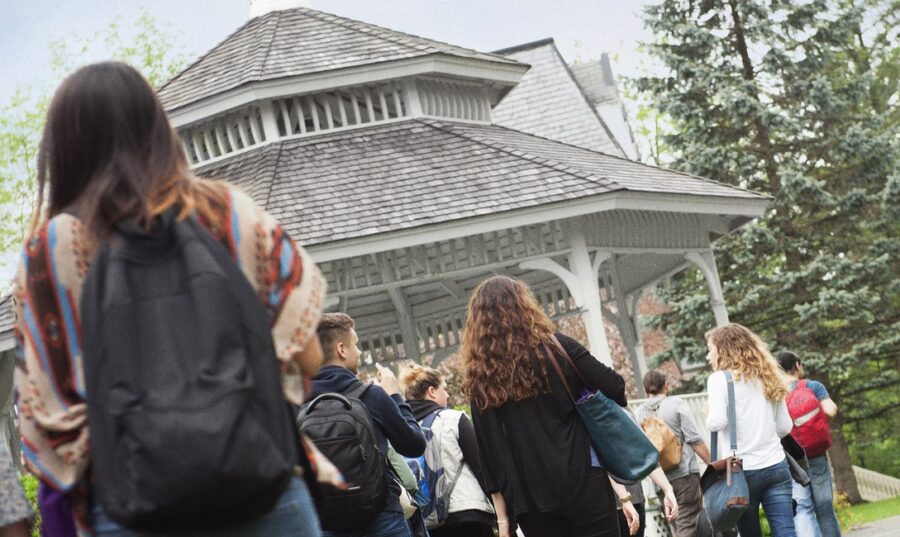As an historic institution, Bishop’s is rich in written and photographic records that offer a window into earlier years. But it’s in speaking to former students and faculty that the B.U. of yesteryear can really come alive. “There are changes, of course. There are new buildings and improvements, yes, but the feeling? The feeling is still the same.” Those are the words of Dr. Douglas Brown, the much-loved Professor of Biology who spent three decades on the Faculty at Bishop’s before retiring in 1996. Now in his eighties, Dr. Brown has a keen memory of his time at Bishop’s and how his decision to make a career of teaching changed the course of his life.

Dr. Doug Brown; and Dr. Kerry Hull, Full Professor, Department of Biological Sciences.
“I actually had very little teaching experience when I arrived at the University, not having set out to pursue a career in education,” says Dr. Brown. “In fact, I was quite uncertain and unfocused when I left high school, without a real plan in place.” Farm life had been all the young Douglas Brown had known. Born in Rouleau, Saskatchewan, he dutifully completed his secondary studies in nearby Avonlea before spending a year working as a bank teller. It wasn’t until he enrolled in a practical applied agriculture course at the University of Saskatchewan that his career path became clearer.
In time, armed with Bachelor’s and Master’s degrees in Agriculture, Douglas began looking stateside for further opportunities in graduate studies. “I don’t know why I felt this way, honestly, but I felt a strong attraction to the United States.” He was offered a fellowship at the University of Wisconsin, coincidentally the alma mater of his master’s supervisor. It took four years for Douglas to finish his Ph.D. course requirements and he spent a further year working as a post doctoral research assistant.
“It was of enormous value, but toward the end of my tenure I had to decide whether I wanted to stay in the US or return to Canada. I decided to come home.” Dr. Brown found a job with Atomic Energy of Canada Limited, working in the Division of Biological Sciences at the nuclear research centre in Chalk River, Ontario. Subsequently, he spent three years there studying the genetic effects of radiation before deciding he needed a change.
“Chalk River is quite an isolated place,” he says. “So I began to look at university employment. I had been a laboratory instructor at the University of Wisconsin, but didn’t feel very confident in my teaching abilities. I thought a smaller university would be a good place for me to learn to teach.”
Bishop’s fit the bill perfectly. Dr. Brown had long been interested in Quebec. The small class sizes and convivial atmosphere sealed the deal. But moving to a new province and changing careers was still a personal and professional challenge.
“It was a bit of a shock,” he chuckles. “My knowledge of the field was good, but I was quite nervous at first as I stood before a class. I knew my subject, but my problems were in presenting it well to the class. However, the students were very generous and overlooked my inexperience, and as I gradually improved I felt at home. Dr. Langford, Chair of the Department of Biological Sciences, was a valued advisor to me at the time.”
Bishop’s was experiencing its own changes when he arrived in 1966. The campus was undergoing a major renewal, creating disruptions for faculty and students alike. Coincidentally, the Quebec education system was in the process of implementing the CEGEP system, adding the extra step between high school and university.
“Bishop’s had established some valuable ties with high schools in Montreal, so those connections were interrupted when CEGEP was instituted,” says Dr. Brown. “The enrolment of the University went down about 500 I think but Bishop’s was still planning for the future. New academic and residential buildings, including a new wing of the Johnson Building for Natural Sciences and Mathematics, were being constructed across a growing campus. The construction in the Johnson Building meant I had to find a corner of a classroom in old Johnson to create a working space for myself. However, by September, new Johnson was nearing completion with attractive teaching facilities (at the time), and I was able to move into a comfortable office for my first semester at Bishop’s. The ensuing years seem today to have passed all too quickly.”
Nearly 25 years after retirement, Dr. Brown is still invested in his former institution and last March he toured the newly renovated Johnson Science building. “The facilities are excellent, particularly the system for the teaching of microbiology and cell biology,” he says. “A greatly improved circulation system is designed with security in mind while the automated greenhouse is a wonderful asset for the Biology Department.”
With respect to Brown’s fifty-plus year affiliation with Bishop’s, he recently decided to establish an endowment, the Douglas F. Brown Opportunity Fund for Student Projects (Experiential Learning) to support study and research by students enrolled in Bachelor’s and Master’s Degree programs. The fund aims to encourage and enhance the scholarly and professional development of Bishop’s students through experiential learning.
“After retirement and as time goes on, I think more and more of the benefits of my education,” says Dr. Brown. “I would like to give back, so to speak, to provide some more opportunity for others. I’m so favourably impressed with the work that Bishop’s has been doing.”
The interview was originally published in the Summer 2020 edition of the Alumni Magazine, which you can read on our website.
To learn more about Bishop’s University’s Biology Department, please visit our website.




